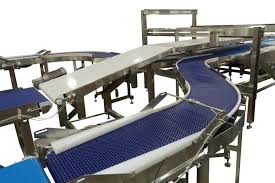The Seamless Workflow of Robotics and Conveyors
Automated Material HandlingConveyor systems serve as the backbone of material handling, efficiently transporting goods from one location to another. When paired with robotics, these systems create a seamless workflow that minimizes manual handling and errors. For instance, automated guided vehicles (AGVs) can navigate the warehouse floor, transporting larger items directly to designated areas, thereby enhancing operational efficiency
Robots equipped with advanced sensors and artificial intelligence can identify, pick, and sort items with remarkable precision. For example, a robot might retrieve an item from a shelf and place it on a conveyor, which then carries it to the packing station. This integration significantly speeds up processing times and reduces order fulfillment errors
Benefits of Integration
- Increased Efficiency
The combination of conveyors and robotics can lead to a 50% increase in operational efficiency. By automating repetitive tasks, businesses can reduce lead times and boost throughput, allowing for faster order processing2. - Cost Savings
Although the initial investment in automation may be substantial, the long-term savings are significant. Automated systems decrease reliance on manual labor, lowering labor costs while operating more accurately to minimize errors and returns12. - Scalability
Automated warehouses are highly flexible. As demand increases, additional robots and conveyors can be integrated without major disruptions, allowing businesses to adapt quickly to market changes1. - Improved Safety
By reducing manual material handling, the risk of workplace injuries decreases significantly. Automated systems ensure that heavy lifting is managed by machines rather than human workers4.
Real-World Applications
The integration of robotics with conveyor systems is already making waves in various industries:- E-commerce Fulfillment: Companies like Amazon leverage this technology to fulfill orders rapidly while maintaining high accuracy levels.
- Packaging Operations: Robotics streamline packaging processes by reducing human error and increasing speed, resulting in substantial cost savings for both small and large operations
2.
- Manufacturing: Automated palletizing systems utilize robotics for stacking products efficiently, which enhances throughput while reducing labor costs
3.






